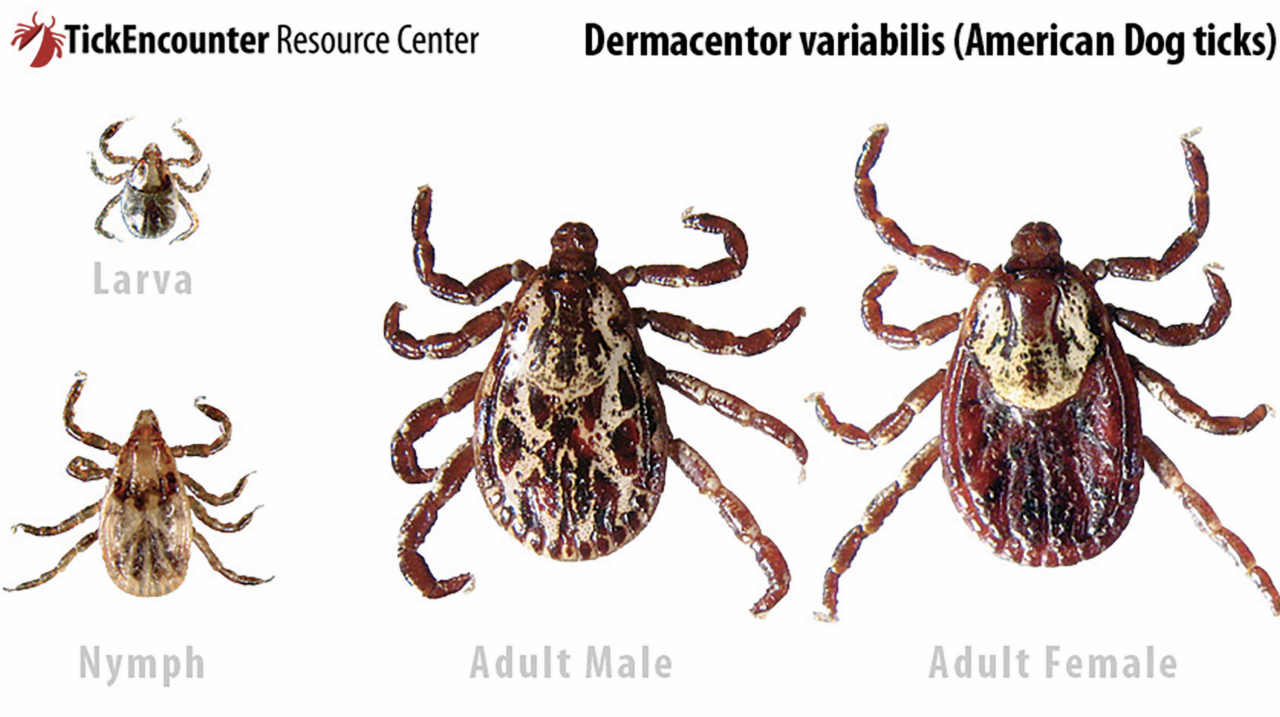By George Fjeld
Editor’s note: Dr. George Fjeld is a retired physician.
Summer’s almost here and it’s time to get outside! Fun things like walking the dog, going for a hike, swimming, and paddling in the lake or playing a round of golf are a few of my favorite options.
However, nothing ruins an outdoor experience like being covered in ticks or, worse yet, finding one attached. Ticks carry a variety of diseases, including Lyme disease (named after Lyme, Connecticut, where it was discovered), Ehrlichiosis, Babiesiosis, Rocky Mountain spotted fever and Anaplasmosis. We worry most about Lyme disease but the U.S. Centers for Disease Control reports cases in the Northeast of all of these diseases. While there are treatments available for most of them, wouldn’t it be better to not get them in the first place?
“An ounce of prevention is worth a pound of cure” goes the old saying, and it is especially true in the case of tick borne diseases. Ticks live in grassy areas, brush and bushes as well as forests. That kind of sounds like all of Vermont, doesn’t it? I remember hunting through a bunch of whips a few years ago and finding 16 ticks on my clothes and skin afterwards!
Luckily, there are ways to keep the ticks away. You don’t have to spend the summer holed up inside your house, just take a few simple measures to protect yourself. Ticks are upward climbers. This means they’ll get on your shoes or socks and climb up your clothes until they reach a spot to get under clothes next to your skin. Tucking your pants into your socks is a good first step. They also fall from trees and bushes. Wear a hat! Ticks are great hitchhikers and will get a ride on your pets to get into your house. Brush your pet when they come in or use a skin-safe bug repellent on them.
To prevent tick bites, you can use Environmental Protection Agency-registered insect repellents containing DEET, picaridin, oil of lemon eucalyptus or its active ingredient IR3535, para-menthane-diol (PMD), or 2-undecanone (derived from wild tomato plants) for exposed skin. All of these are proven to work for both ticks and mosquitoes for a period of time after application.
I’m looking forward to products containing nootkatone, derived from grapefruit (and responsible for the fruit’s classic smell) to hit the market widely. Approved by the EPA in 2020, it not only repels but also kills ticks and mosquitos. Grapefruit oils may work but may be irritating to the skin and also stain clothing, so they should be applied to hats and gloves used outside.
Wearing permethrin-treated clothing will keep ticks from hitching a ride on your clothes. Available as a spray or in new clothing already treated, it lasts for at least six washings and a study showed it worked for a year. To treat your clothes, wash and dry them and lay them out outside. Spray them liberally on both sides and allow to dry before wearing. There is evidence that shoes and socks are especially important. Don’t put permethrin on your skin! It’s toxic! Studies show that there is no significant absorption from the clothing after daily wear for three months, so that’s where to apply it.
Check for ticks when you come home from outdoor adventures. Check twice, the little suckers can be hard to spot. Ask a trusted friend to check hard-to-see, awkward areas or use a mirror. Look in the scalp, hairline, ears and behind the ears, under arms, belly button, waist, groin and behind the knees. Or, as The New York Times says: Check yer back and yer crack and yer pits and your bits for ticks.
If you do happen to find a tick attached, don’t panic! Tick removal is easy. Using fine tweezers, grasp the tick close to the skin and pull sharply upwards away from the skin. Don’t squeeze the belly or abdomen of the tick. If you happen to leave behind little black specks, don’t worry. These are the mouth parts and removing them doesn’t help prevent disease and may cause secondary infection. Treat the wound with a little antibiotic ointment. The other option is a commercially available tick removal tool called a tick twister. It looks like a tiny pry bar but is used to slip around the head of the tick and rotated to make the tick release its tenacious hold on the skin. I have found it very useful and less traumatic than tweezers.
It is normal to have a small red spot surrounding the bite, which may itch and last a couple of days. It should not get bigger! If it does, contact a medical professional.
If you get ticks from your backyard or frequently-used path, you may consider cleaning up your yard (just joking). Really, you can reduce the tick population in a limited area by taking care of the white-footed mice in this area! These mice are the natural hosts for the ticks. Providing them nesting materials treated with permethrin will reduce or eliminate the ticks. To do this, take toilet paper tubes and stuff them with cotton balls treated with the same permethrin spray you used on your clothes. Scatter these around the area you would like to treat. You should notice a difference in a few weeks!
So, get protected and get out to enjoy our great Vermont spring, summer and fall!




